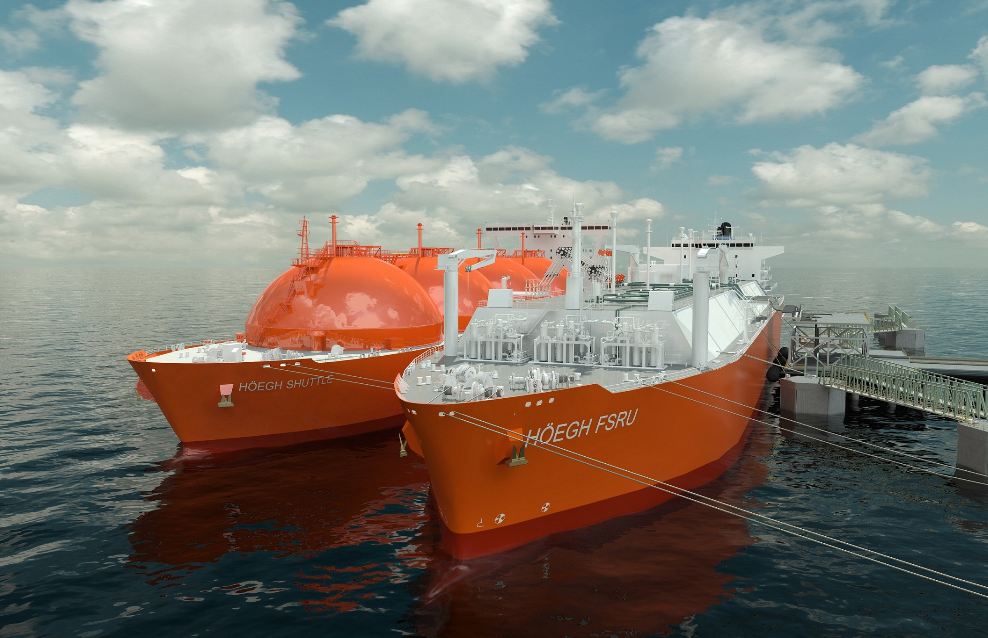
Baltic LNG Terminals Conditioned by Gas Sector Reform
Publication: Eurasia Daily Monitor Volume: 9 Issue: 128
By:

Lithuania is forging ahead on natural gas sector reform and liquefied natural gas (LNG) access, outpacing other states in the region. In 2011, Lithuania became the first EU member country to adopt the Third Package of EU energy market legislation, choosing its most far-reaching version. This legislation requires Russian Gazprom to give up control of pipelines on Lithuanian territory (“unbundling”). In parallel with this, Lithuania may become the first among the EU’s “new” member countries to start operating an LNG terminal. It plans to install a Norwegian floating terminal at Klaipeda in 2014, which would break Gazprom’s supply monopoly in Lithuania and (depending on capacity) also farther afield.
In Latvia and in Estonia, the Russian tandem of Gazprom and Itera holds sway over Latvijas Gaze and Eesti Gaas, respectively. The Estonian parliament and government have enacted mandatory unbundling reform in June of this year (2012), with a target date for completion by January 2015.
Latvia aspires to host a Baltic regional LNG terminal on its own territory and seeks EU financing toward that goal. A sense of rivalry has developed unnecessarily between Latvia and Lithuania over primacy in hosting an LNG terminal. Latvia invokes several valid arguments in its favor (see below); but these are undermined by Russia’s continuing, as yet unchallenged control of the pipeline grid in the country. This would enable Gazprom to control the transmission and distribution of any non-Russian gas pumped from an LNG terminal into Latvia’s territory and farther afield in the region. This could, if anything, reinforce Gazprom’s position in Latvia and beyond.
Riga could present a stronger case for hosting a regional LNG terminal by implementing the EU law and ending Russian control of the pipeline grid in the country. But since Lithuania is well along in doing this, Vilnius can more convincingly argue for EU support for an LNG terminal in Lithuania.
Lithuania continues to move proactively. On July 3, it announced an international tender for a pipeline to connect the planned LNG terminal in Klaipeda with the country’s gas transmission grid. Lithuania is wasting no time: the tender’s deadline is August 2, and the winner will be required to lay the connecting pipeline within 27 months, i.e., before the end of 2014. That is also the target date for the LNG terminal in Klaipeda to start operating. By that time, Gazprom should have given up its control of pipelines, under European and Lithuanian law and the EU-mediated “unbundling” plan with the Lithuanian government (BNS, Delfi.lt, July 3).
Gazprom currently holds 100 percent market share in Lithuania (as it also does in Latvia) for pipeline-delivered natural gas. The joint company Lietuvos Dujos (Lithuanian Gas) is the main importer of Russian gas in the country, as well as pipeline grid owner-operator. Gazprom, its German ally E.ON Ruhrgas and Lithuania’s Energy Ministry hold 39 percent, 37 percent and 18 percent, respectively, of Lietuvos Dujos shares (with another 6 percent dispersed among small shareholders). Thanks to its supply monopoly, Gazprom practically holds sway over the joint company.
Under the unbundling plan, Lietuvos Dujos (i.e., basically, Gazprom as monopoly supplier) shall separate its gas transportation business from its supply business, in compliance with the EU’s Third Package of energy market legislation. Lithuania’s regulatory agency (National Energy and Price Control Commission) stipulates the time-table for these steps. Lietuvos Dujos must hand over its gas transmission activities (trunk pipelines) to a newly created transmission enterprise by July 31, 2013. It must then hand over its gas distribution activities (gas retailing networks) to a newly created distribution enterprise by October 31, 2014. Lietuvos Dujos would remain active in the supply business – i.e., procuring gas from Gazprom, its shareholder. Unofficially, it is understood that the Lithuanian state would take over the transmission pipelines. Gazprom, the Lithuanian government and the EU will informally continue trilateral talks to appraise the value of the unbundled assets and compensation (Interfax Oil & Gas Report, June 25).
Gazprom is apparently going along with this, under a necessary degree of legal duress. The EU’s energy market legislation (Third Package) authorizes penalties on vertically integrated gas companies that refuse to separate transportation from supply. Penalties include fines of up to 10 percent of the offending company’s annual business turnover. This applies in EU territory to EU companies as well as non-EU ones. In the Baltic States it applies to Gazprom’s vertically integrated monopoly, assuming host-country political will to enforce the legislation effectively. Lithuania and, most recently, Estonia demonstrate that resolve. Gazprom is protesting against Lithuanian “pressures,” but it has voted to approve the unbundling decisions within the Lietuvos Dujos shareholders’ assembly and board.
Successful unbundling is a prerequisite to any viable LNG project in the Baltic States. If Gazprom retains control of inland pipelines, then the gas transmission from the coastal terminal to inland consumers would depend on Gazprom. The latter would not only extract rent for the use of transmission pipelines but would also be well positioned to manipulate access to those pipelines. Theoretically, the Baltic States have the option to build new transmission pipelines outside Gazprom’s control; but that option would raise the LNG projects’ overall costs to prohibitive levels, discouraging any commercial investors. Thus, LNG projects necessitate freeing the existing pipelines from Gazprom’s control.
Klaipedos Nafta, 71 percent Lithuanian state-owned, is in charge of the LNG project at the year-round ice-free port of Klaipeda. Under the contract, the Norwegian company Hoegh LNG shall deliver and install the liquefied gas reception terminal and re-gasification plant, with a first-stage capacity of two billion cubic meters (bcm) of re-gasified product annually, and 3 bcm per year in the second stage. Lithuania will rent the floating terminal for the first ten years of operation, with the right to purchase it and related installations and to operate them independently after that ten-year period. First-stage operations are scheduled to be launched by the end of 2014 (see EDM, March 5).
By that launching date, Lithuania should have achieved control of the transmission pipelines on its territory. Lithuania’s current gas requirement is approximately 3.5 bcm per year. Gazprom will undoubtedly continue covering a substantial part of that requirement after the unbundling. Thus, the LNG terminal’s second stage (if completed) would enable Lithuania to re-export some gas volumes to Latvia, and/or store some gas volumes in a Latvian underground storage site. This could, at least to some degree, reduce Latvia’s now-total dependence on Russian gas. Lithuania and Latvia plan to build a bi-directional interconnector pipeline, with access to Latvia’s massive but under-used Incukalns storage site.
For its part, Latvia can make a strong case for EU support for a Baltic regional LNG terminal near Riga (see above). Its central geographic location in the region, port capacity for a larger LNG terminal, and a specific geology that favors underground storage sites for imported gas, are Latvia’s inherent advantages over Lithuania or Estonia.
However, Russian control of pipelines in Latvia cancels those advantages, as long as Riga postpones the enforcement of the EU’s Third Package of energy market legislation on Latvia’s territory. Any joint Latvian-Russian use of the Incukalns storage site would also compromise a Baltic regional LNG terminal in Latvia. Conversely, Latvian unbundling of Russian-controlled pipelines would boost the case for the Baltic LNG project near Riga, which would in turn ensure effective use of the Incukalns site.
An LNG terminal on the Estonian coast would apparently involve a joint venture with Finland. The European Commission is currently evaluating the Latvian, Lithuanian and Estonian options for a Baltic regional LNG terminal. The Commission’s decision is expected by autumn 2012. The winning option would qualify for partial funding by the EU.
Latvia argues that Lithuania’s relatively small terminal undermines the concept of a single, large-capacity regional terminal, such as the one Latvia proposes to host. At twice the capacity of Lithuania’s terminal, the Latvian project is more dependent on EU funding. Ultimately, Vilnius does not compete against Riga over that funding. Vilnius has already decided to go it alone with its LNG terminal, instead of waiting for Latvia to adopt the EU legislation, take over the pipelines and start building a regional terminal. Latvia can still capitalize on its natural advantages for a larger LNG terminal, provided it implements EU law to preclude any Russian control of transmission pipelines or storage sites.




